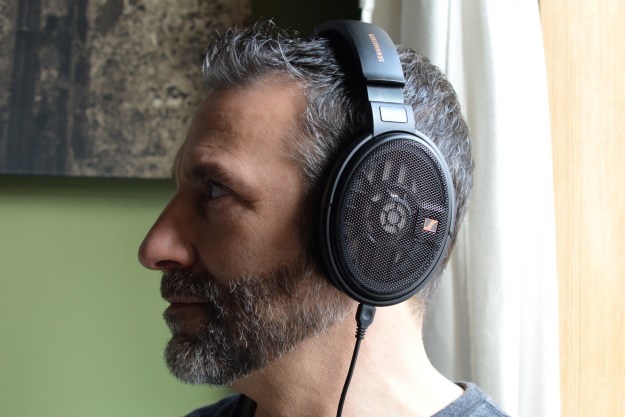
“The Sennheiser HD 660S2 provide rich and detailed audiophile sound for critical listening sessions.”
- Detailed and dynamic sound
- Excellent bass response
- Balanced and unbalanced cables
- Comfy enough for long sessions
- No case for protection
- Clamping force may feel too strong
Open-back, wired headphones are, for a lot of audiophiles, the only kind of headphones worth using. They’ll wax poetic about the superior audio quality that comes from letting sound (which is to say, air vibrations) move freely in two directions — toward your ears, as well as away from them.
For the longest time, I was having none of it. Having spent most of the last 20 years listening to nothing but closed-back headphones and deep-seated wired and wireless earbuds, I just didn’t think open-back cans could offer me anything I wasn’t already getting.
I was wrong, and the Sennheiser HD 660S2 proved it.
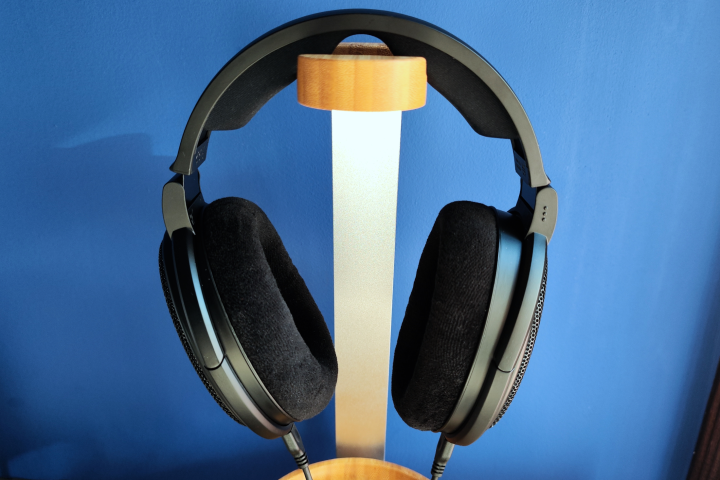
At $600, the Sennheiser HD 660S2 are pricey if you’re comparing them to the high-tech wonder that is Sony’s $400 WH-1000XM5. After all, the Sonys can operate wirelessly, they feature superb active noise cancellation (ANC), and they’re loaded with smart add-ons like the ability to automatically engage transparency mode when they sense you’re talking. And yeah, they sound amazing.
However, critical listening — a term I use to describe those rare moments when you can ease yourself into the comfiest seat in your home and give yourself over to the act of getting lost in your favorite music — is an activity that should be mediated by as little tech as possible. The HD 660S2 are very well-suited to the task.

Design and comfort
A deeply plush set of ear cushions line the earcups, and a strip of memory foam provides the headband with excellent pressure distribution. Clamping force is a bit on the assertive side — though comfortable overall, I found myself aware of the pressure near my temples. It’s not a deal breaker — I’ve been through a number of cans where this was true right out of the box, but gradually lessened over time.
Curiously, Sennheiser has opted for a fairly narrow headband. It’s just 30 millimeters at its widest point as compared to the more affordable $200 Sennheiser HD 560S, which has a 45mm width. Will the 660S2’s narrower band remain as comfortable once that clamping force relaxes a little? It’s too soon to say.
The metal sliders have a fiercely notchy length adjustment, so there’s absolutely no fear that they’ll change once you find your size.
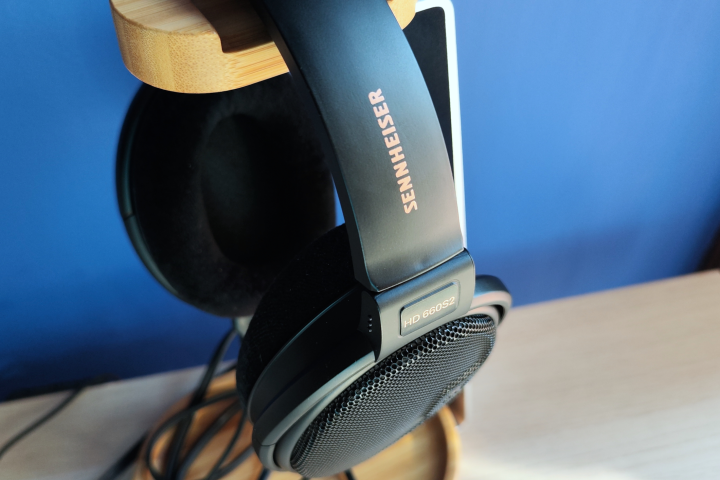
The rest of the design follows the style Sennheiser uses for its entire 600-series of headphones, with a minimalist approach that stops just short of being utilitarian thanks to the glossy metal mesh that protects the internals. It’s not only functional — letting air move freely — but it’s also aesthetically pleasing, letting us glimpse the latticework that supports the 42mm dynamic drivers. My biggest critique is that Sennheiser’s only nod to protection for your $600 investment is a nylon pouch. I know that these
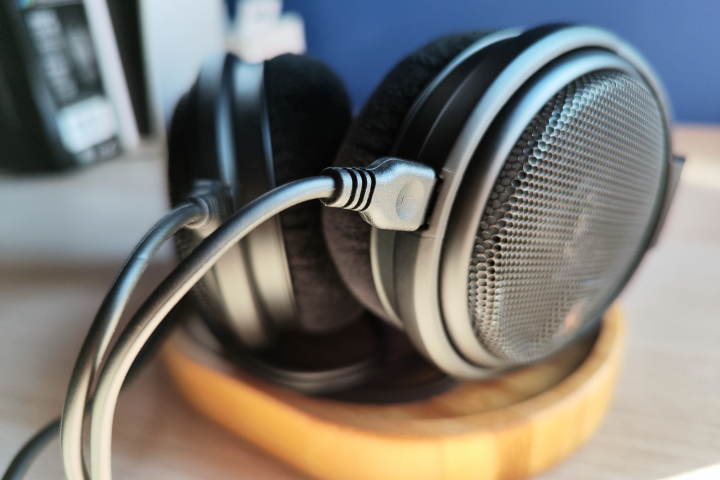
Balanced or unbalanced?
Another feature the 660S2 share with their siblings is the detachable, independent left/right cable system. In the box is an unbalanced cable — the kind you’d use to plug into standard home hi-fi equipment (or a laptop/portable player with the included 3.5mm adapter). But if you are a true enthusiast, you’ll likely opt for the second, “balanced” cable.
Balanced cables are only compatible with dedicated headphone amps, or combo digital-to-analog (DAC)/amps that also have a balanced output.
Why “balanced?” The theory is that signals sent along balanced cables are inherently less susceptible to interference we might be able to detect as audible noise. I won’t get into all of the technical details, but suffice it to say that there’s a fair amount of debate as to whether balanced cables — at the very short, 6-foot lengths Sennheiser has provided — make any difference at all. I have two DAC/amps that are equipped with both 4.4mm balanced and 3.5mm unbalanced outputs (an Ifi GoBar and a Questyle M15), and I’d be lying if I said I could hear a difference between the two outputs.
It’s worth noting, especially if you’re new to the world of audiophile-grade gear, that these headphones have a 300-ohm impedance, which means that even though you can plug them into a conventional headphone jack on your computer, you shouldn’t do that. You’ll still hear sound, but you’ll likely conclude that I’m crazy and that these cans aren’t anything special. In order to perform at their best, high-impedance drivers require more amplification power than regular wired cans or earbuds. Trust me, even a budget-friendly DAC/amp is going to go a long way toward making these cans hum.
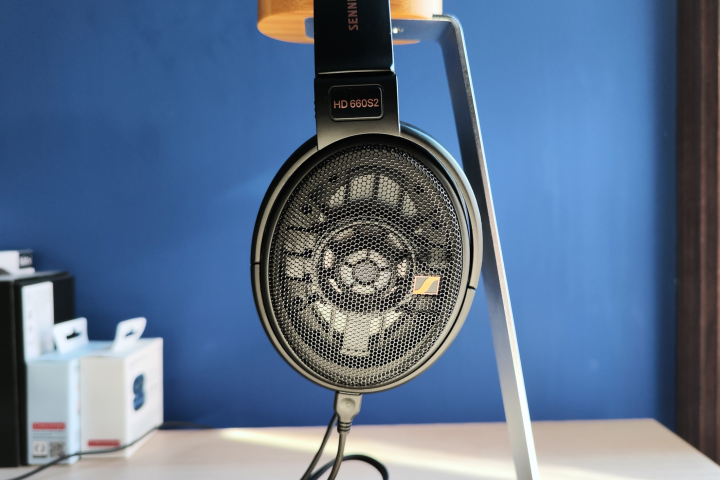
Effortless sound
Still, what I did hear blew me away. I’ve enjoyed the sound of the Sennheiser HD 560S, with their impressive precision, clarity, and ever-so-slightly warm EQ, but as I said in the introduction, they still felt less immersive than the closed-back cans I’d been using. But going from the HD 560S to the HD 660S2 is like opening a door that you didn’t even know was between you and your music.
In a word, the sound is effortless. It just springs forth and gently bathes you in its detail, instead of pummeling you, which I now recognize as a possible side effect of closed-back headphones.
I’ve recently developed a fondness for blues guitar, which has prompted an exploration of artists like B.B. King and Stevie Ray Vaughan. Listening to a track like Vaughn’s Tin Pan Alley on the HD 660S2 is glorious. All of the instruments, from the deep thrumming bass to the lilting, shimmering highs produced by Vaughan’s guitar work to all of the percussive hits — each is beautifully rendered.
I was thrilled to discover that deep, resonant bass — the part of the listening experience that I have always found lacking with open-backs — is every bit as present on these cans as I had hoped for. Yes, audiophiles, go ahead and say it. You told me so.
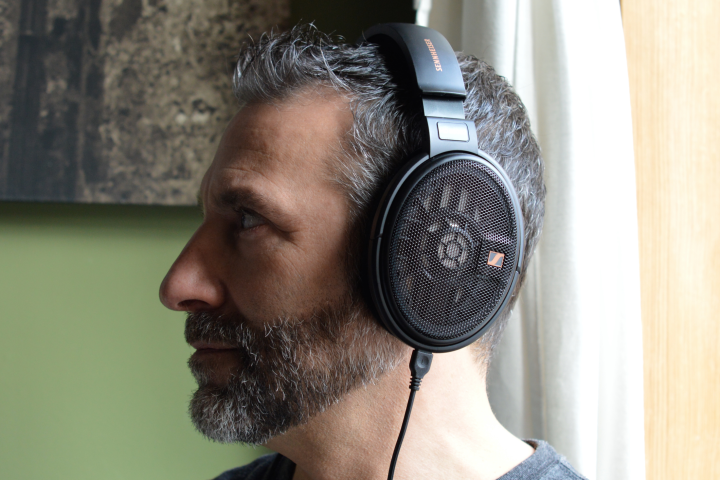
Open-back cans, with their inherently open and airy quality, should help you hear nuances in the soundstage, and this definitely proved true with the HD 660S2. The tracks from the Cowboy Junkies Trinity Sessions recordings possess a unique sound thanks to where they were recorded. Faint echoes can be heard as one dies away before the next one hits, lending the songs a slightly ethereal quality, while at the same time helping to place you in the same space as the band. I’ve heard it many times, but the 660S2 made it sound even more natural.
Best of all, for me at least, nothing felt like it was missing. Quite the opposite, in fact. I’ve been enjoying many moments where a favorite song reveals a detail that had been laying dormant for years or even decades.
Clearly, I was wrong about open-back headphones. But in my defense, I’ve never listened to a set like the Sennheiser HD 660S2 before. Now that I have, there’s no going (closed) back.
Editors' Recommendations
- Sennheiser’s HD 620S closed-back cans have an open-back soul
- Sony goes open-back with the MDR-MV1 studio monitors designed for spatial audio
- Sennheiser’s HD 560S headphones aim for budget-conscious audiophiles




